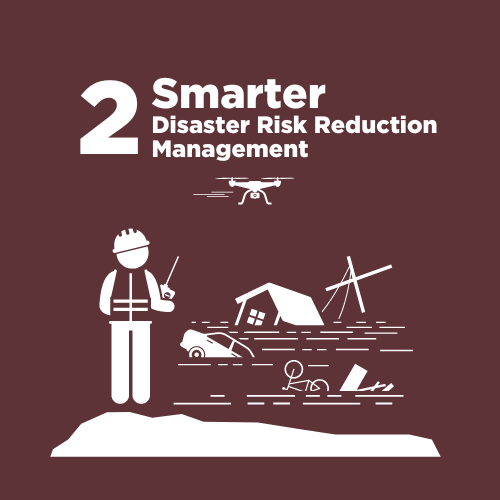The City Government has to source out for possible funding support to fully institutionalize the digital map of the city which requires big amount of money
Registration: 24 Sep 2022 to 31 Oct 2022Submission: 25 Oct 2022 to 31 Oct 2022
Participanting Teams: 1
Submissions: 0
LGU: Cauayan City
Themes: Regional Organizations, Business and Civil Society, Climate Change, Sustainable Infrastructure, Food and Security, Education and Occupational Immobility
Categories: Smarter Disaster Risk Reduction Management
Login to join challenge

Digital infrastructure is a kind of support that Smart Cities aims to achieve as a more accessible way of monitoring their respective communities. In the case of Cauayan, a digital map is an innovative platform to define situations of a place with the granular requirement to project so. Digital Engineering is support implied in this anticipation and with this, regional organizations may possibly be achieved when accessibility to communities’ current state is reachable in a few clicks.
However, budget allocation and sourcing are a challenge for the city to employ this innovation. Financial support is viewed to establish this infrastructure and attribute communities in a more engineered manner. That is why, experts, researchers, engineers, policymakers, and other interested organizations are encouraged to take part in transforming data sets into innovations that will define the City’s budgeting priorities and give emphasis to this innovative move.
The following use-case statements are your guide to help you align your intention in addressing areas of this challenge:
a. How can data be transformed to define guidelines to prioritize digital maps in pursuit of regional organizations?
b. How can data be transformed into innovation to structure the design of the digital map with cost-efficient considerations for possible business opportunities like attracting investors?
c. How can data be translated into an ingenious solution to establish a digital map that can monitor the adverse effects of climate change and be of consideration for budget legislation?
d. How can data be a good help in developing the digital map as a sustainable infrastructure supporting the need of all sectors in the city?
e. How can data and technology align the guidelines in legislating the budget for the digital map necessary in upholding food security and resiliency in the city?
f. How can data and technology empower communities by having a good view of their geographical setting and its capacity to support sustainable livelihood?
However, budget allocation and sourcing are a challenge for the city to employ this innovation. Financial support is viewed to establish this infrastructure and attribute communities in a more engineered manner. That is why, experts, researchers, engineers, policymakers, and other interested organizations are encouraged to take part in transforming data sets into innovations that will define the City’s budgeting priorities and give emphasis to this innovative move.
The following use-case statements are your guide to help you align your intention in addressing areas of this challenge:
a. How can data be transformed to define guidelines to prioritize digital maps in pursuit of regional organizations?
b. How can data be transformed into innovation to structure the design of the digital map with cost-efficient considerations for possible business opportunities like attracting investors?
c. How can data be translated into an ingenious solution to establish a digital map that can monitor the adverse effects of climate change and be of consideration for budget legislation?
d. How can data be a good help in developing the digital map as a sustainable infrastructure supporting the need of all sectors in the city?
e. How can data and technology align the guidelines in legislating the budget for the digital map necessary in upholding food security and resiliency in the city?
f. How can data and technology empower communities by having a good view of their geographical setting and its capacity to support sustainable livelihood?